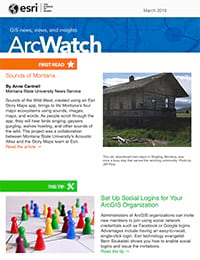Montana State University Helps Bring Montana’s Ecosystems to Life with the Use of Sound in a Story Map
A new collaboration brings to life Montana’s four major ecosystems, with sounds, images, maps, and words—all accessed from the convenience of a computer or mobile device.
Sounds of the Wild West, created using an Esri Story Maps app, celebrates the Crown of the Continent, Upper Missouri, High Plains, and Greater Yellowstone ecosystems through 25 sound recordings, 5 maps, and nearly 30 images. The project is the result of a collaborative project between Montana State University’s Acoustic Atlas and the Story Maps team at Esri, which developed the Story Maps apps to help people to tell stories with maps.
“In some ways, natural sound is an undiscovered country,” notes the introduction to the project. “Every time you hear the wilderness, you are hearing it for the first time. One day you might hear a red-winged blackbird singing as the wind rustles the reeds around it. That night, the call of a coyote may ring out against a backdrop of chirping crickets as you fall asleep in your tent. These soundscapes are as rich and diverse as the natural spaces in which you’ll find them.”
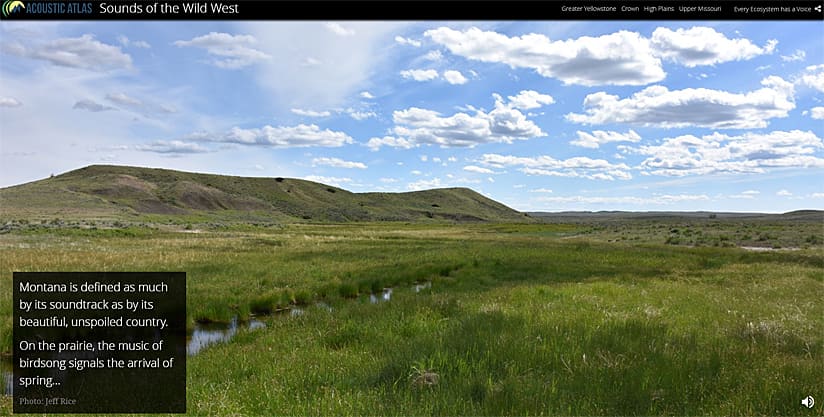
Audio recordings used in Sounds of the Wild West range from gurgling geysers in Yellowstone National Park to birdsongs to the whistle of a train to roaring grizzly bears. The sounds come from the Acoustic Atlas, a collection of more than 2,700 natural-sound recordings from throughout Montana and the West. Launched in 2013, the archive is based at the Montana State University (MSU) Library and focuses on the sounds of the western United States. It has become one of country’s premier online collections of natural sounds.
For the Sounds of the Wild West project, collaborators pondered how to best present the sounds.
“Ultimately, Montana’s natural environment is defined by its ecosystems,” said Jeff Rice, Acoustic Atlas program director and cofounder. “We decided to find sounds recorded in different ecosystems and represent ecosystems spatially and then tell a little bit of a story about the recordings we’ve been making.”
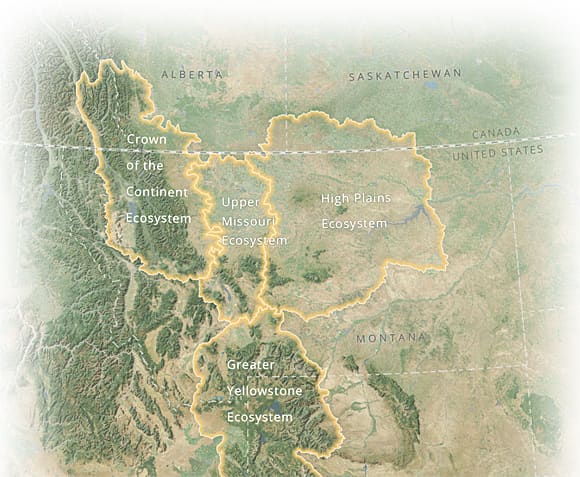
The team then consulted with the Montana Institute on Ecosystems, a Montana University System research institute focused on environmental sciences, to determine the proper boundaries for Montana’s ecosystems.
Rice noted that one strength of Sounds of the Wild West is the context it gives to the sounds. Throughout the story map, text and images help visitors understand the sounds.
“People will have fun and learn about the sounds of different species and places, but they’ll also learn about Montana’s ecosystems and some of the ways the natural environment is structured,” he said. “There are lots of different layers [to this project]. It’s educational about sound but also educational about Montana’s natural environment.”
Allen Carroll, leader of the Esri Story Maps team, said that working with the Acoustic Atlas gave the Esri team an opportunity to experiment with sound as “a powerful and evocative addition to the storytelling toolkit.”
“Sounds of the Wild West amply demonstrates how audio—in this case, beautiful natural sounds from the Acoustic Atlas—can add a whole new dimension to multimedia storytelling,” Carroll said.
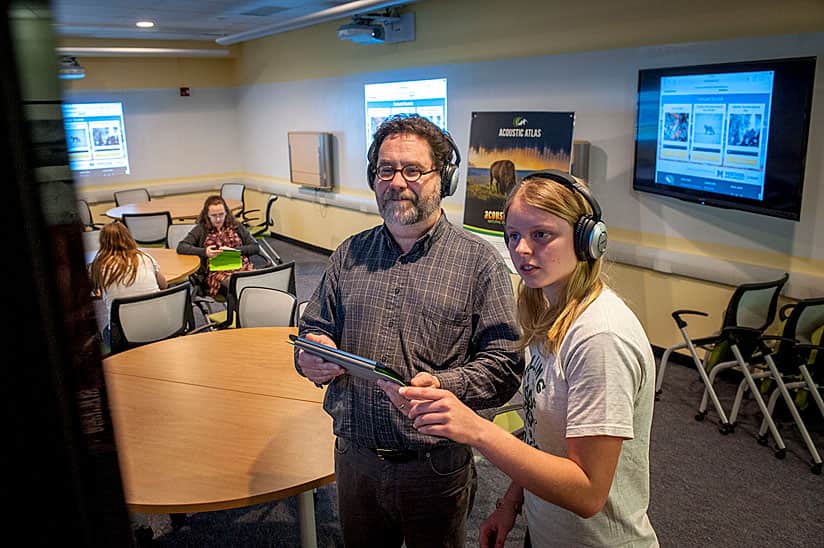
Rice agreed that sounds are powerful. “Sounds are a great door into understanding the natural world,” he said. “Sometimes we take it for granted, but sound is something that’s really hard to ignore. There’s something really special about hearing the voice of an animal, partly because you don’t hear it that often. . . . It’s dramatic. I find that every sound tells a story, so that’s what really draws me to the sounds.”
In addition, sounds are spatial, he said.
“Sound enters your room and swirls around the room, and it starts to become part of the space you’re in,” Rice said. “It’s four-dimensional in that respect.”
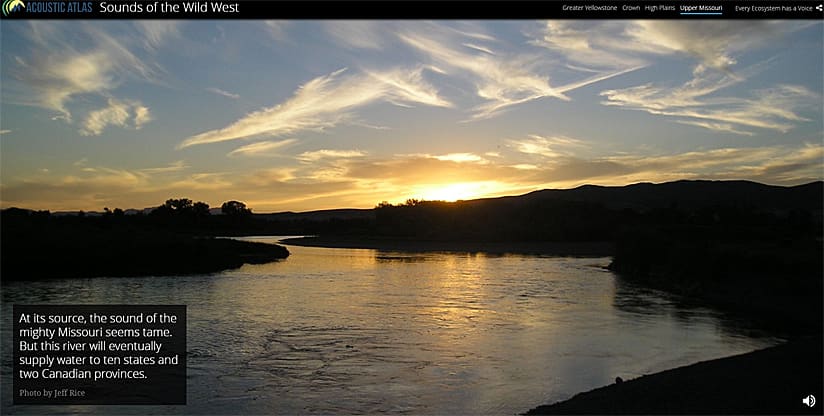
To explore the entire MSU Acoustic Atlas, visit acousticatlas.org.
This article has been adapted from an article previously published by Montana State University News Service. It was reprinted with permission.

